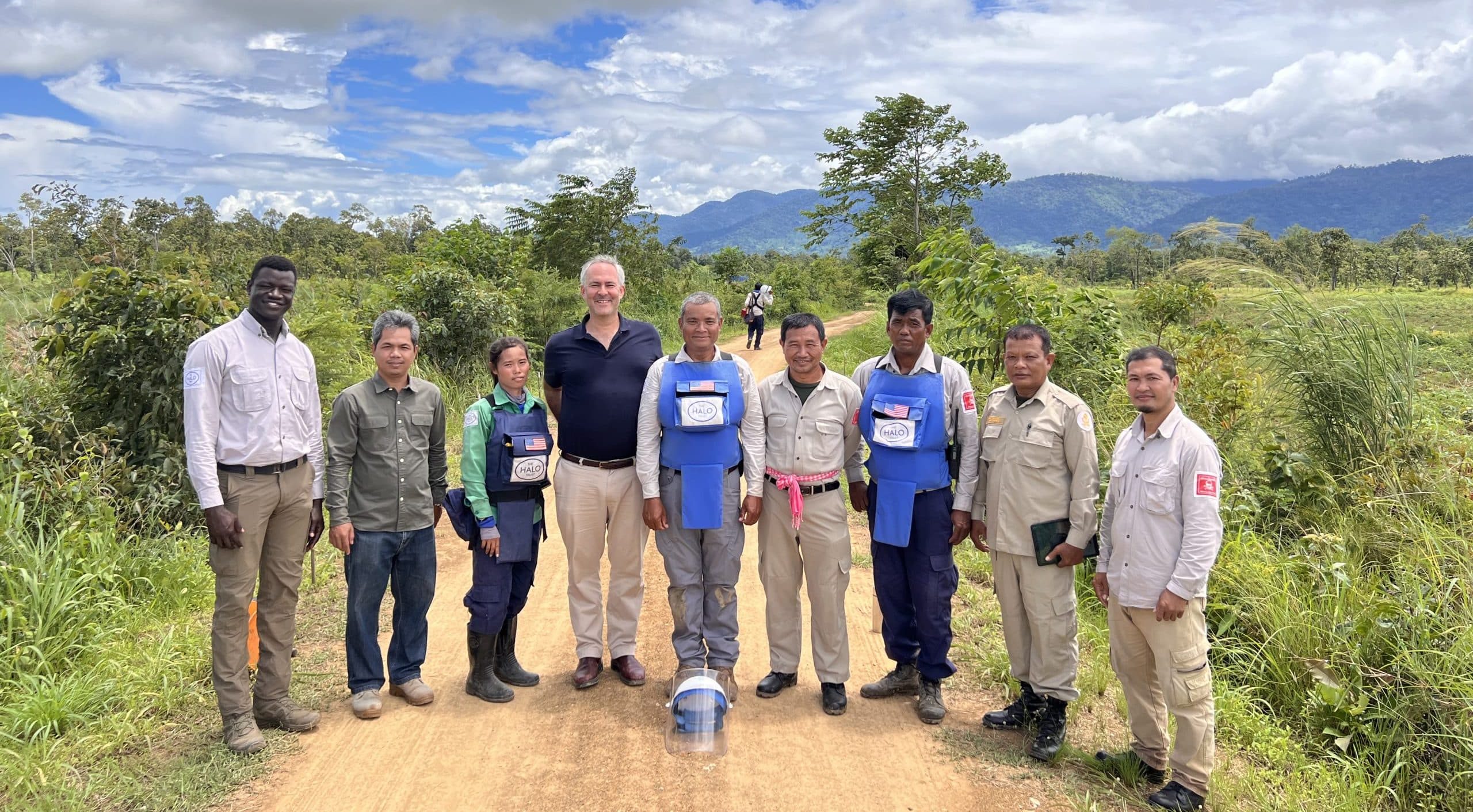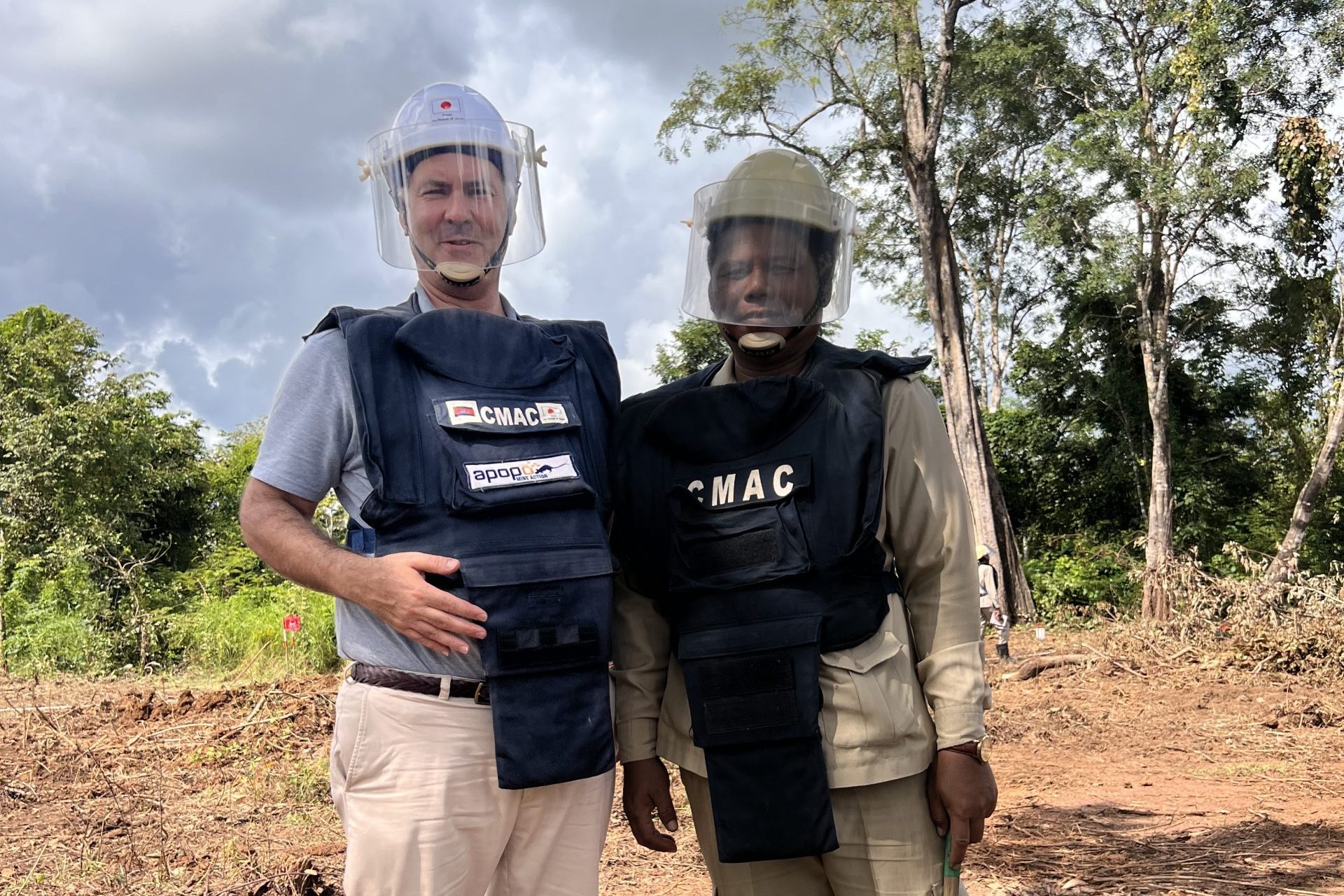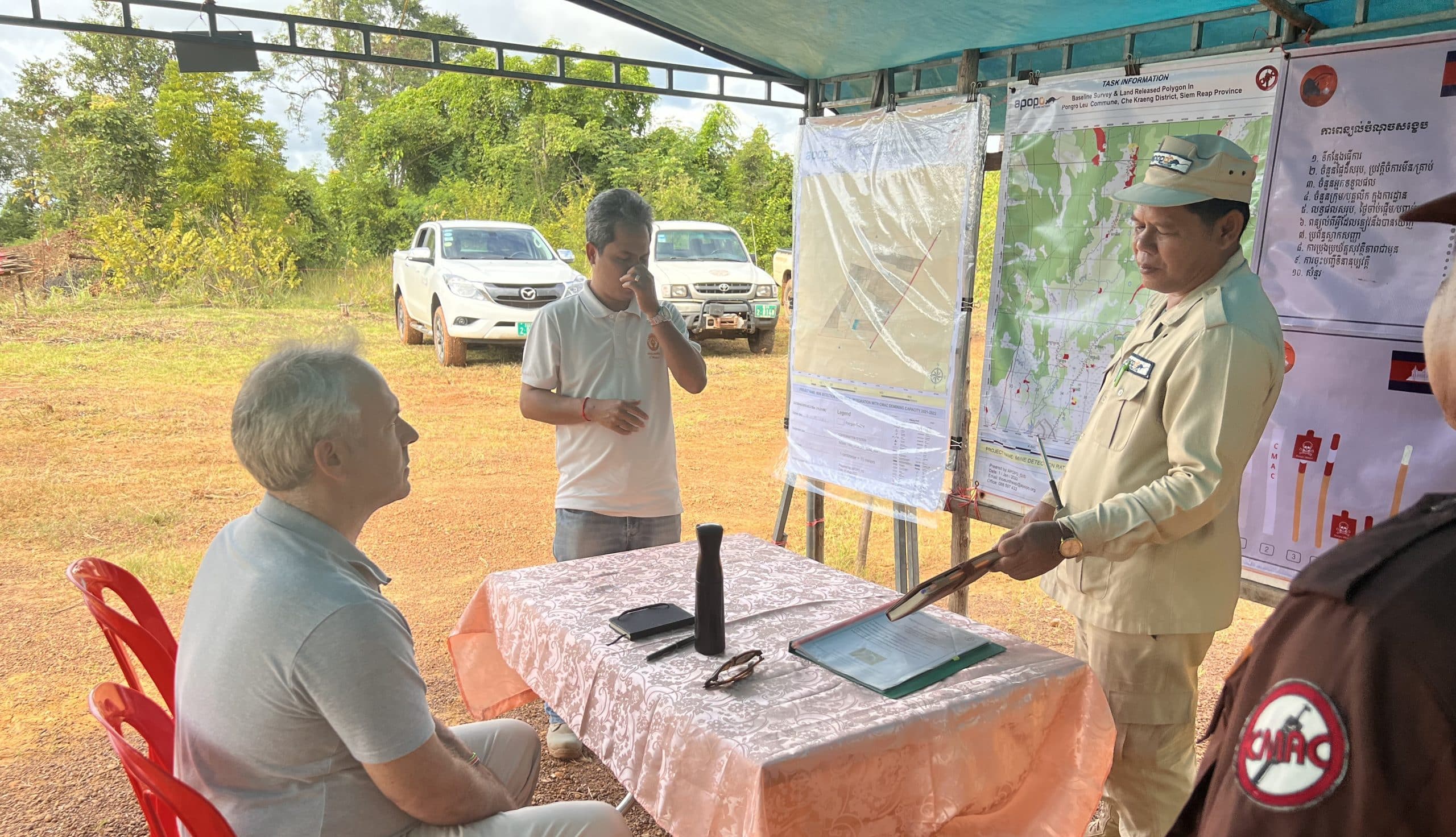The Technical Assistance Partnership —Expert Deployment Mechanism (TAP-EDM) initiative, implemented by Alinea International and funded by Global Affairs Canada, collaborated with Patrick Fruchet, a Mine Action Expert, and Cambodia’s Mine Action Authority (CMAA). CMAA is responsible for overseeing landmine clearance within Cambodia. The initiative explored innovative financing options so Cambodia can reach its mine-clearing goals by 2025. Patrick supported the CMAA management team in developing costed plans to clear Cambodia’s remaining minefields by the end of next year while looking at ways to find more international funding to reach that goal.
As the initiative ends, full funding for the national mine action through end 2025 appears to be within reach. The CMAA requested hands-on practical support as it seeks to attract significant amounts of funding for humanitarian landmine clearance as soon as is practical. In addition, the technical assistance provided briefing and content for senior CMAA officials on best practices regarding international fundraising tactics, including a capstone resource mobilization positioning document. In this blog post, Patrick emphasizes Canada’s opportunity to showcase its humanitarian diplomacy by aiding Cambodia and Thailand in clearing minefields, supporting the Ottawa Treaty while enhancing Canada’s standing in Southeast Asia, and demonstrating its commitment to global peace and security.
By Patrick Fruchet, Mine Action Expert
“It’s not a foreign issue. It’s a Canadian issue.” So said Erin Hunt, Executive Director of Mines Action Canada, late last year from a lectern inside the Canadian War Museum in Ottawa, in front of an audience that included Foreign Affairs Minister Mélanie Joly and former Foreign Affairs Ministers Lloyd Axworthy and Peter Mackay. Ms. Hunt spoke about Canada’s role in humanitarian landmine clearance worldwide since the 1990s.
In October 1996, a conference on the global landmine crisis was held in Ottawa, with Lloyd Axworthy challenging governments from around the world to bring about an international ban on landmines. Jody Williams, who earned the Nobel Peace Prize for her work to ban landmines, said the following about that fateful conference: “We were all prepared for the concluding comments by Lloyd Axworthy. He ended with a challenge. The Canadian government challenged the world to return to Canada in a year to sign an international treaty banning anti-personnel landmines.” The “Convention on the Prohibition of the Use, Stockpiling, Production, and Transfer of Anti-Personnel Mines and Their Destruction,” universally known as The Ottawa Treaty, opened for signature on December 3, 1997, in Ottawa.
This feat of humanitarian statecraft traces back to awareness raised in Ottawa by Canadian UN blue beret soldiers serving in Cambodia in the early 1990s. Fighting from the 1960s through the 1990s had left the Cambodian countryside littered with landmines. Following the Paris Peace Accord of 1991, about 700 Canadian Armed Forces members served with the UN in Cambodia between February 1992 and September 1993, with dozens more staying on through the 1990s to work with the Cambodians to clear their country of landmines. In June 1994, Canadian Lt. Col George Focsaneanu, the chief mine action technical adviser to the Cambodian government, said, “The only way to clear Cambodia of mines is limb by limb,” unless international support was forthcoming. While Focsaneanu’s dire warning led to the mobilization of hundreds of millions of dollars for landmine clearance from Canada and likeminded international donor countries, it also proved prescient as, despite the heroic efforts of the thousands of primarily Cambodian deminers, some 20,000 Cambodians have lost their lives to landmines, with another 30,000 injured.
I have known of the landmine problem in Cambodia since 1996, when – some months before Lloyd Axworthy challenged the world to ban anti-personnel landmines – I was warned to heed the red ‘Danger Mines’ warning signs while exploring rural Cambodia. Some years later, as a United Nations official in Afghanistan, I worked alongside some of George Focsaneanu’s fellow Canadian soldiers to clear Afghanistan of its landmines.
With this legacy in mind, I signed up for the Canadian Technical Assistance Partnership (TAP) initiative funded by Global Affairs Canada and implemented by Alinea International to collaborate with the Cambodian Mine Action and Victim Assistance Authority (CMAA). The CMAA is responsible for overseeing landmine clearance within Cambodia. At the CMAA, I supported the management team in developing costed plans to clear Cambodia’s remaining minefields by the end of next year while looking at ways to find more international funding to reach that goal. Through TAP, CMAA was supported in strengthening its leadership on the world demining stage and offered to host the 5th Review Conference of the Ottawa Treaty, which will take place in Siem Reap, Cambodia, in November 2024.
Unfortunately, Cambodia still has some clearance work to do. Last year, 32 Cambodians were injured or killed by landmines. Many of those injured and killed in more recent years have encountered minefields in Cambodia’s northwestern region along the border with Thailand. These minefields have been left for last as Cambodia and Thailand worked to resolve border disputes dating back to the early 1990s. In November 2022, in a significant breakthrough, the then-Cambodian Prime Minister said that he had agreed with his Thai counterpart that clearance work should happen on the border. “We do not need to determine whether the border must be demarcated before demining,” he said. Since then, progress on border clearance has been slow, calling into question Cambodia’s plans to clear all remaining landmines by the end of 2025.
Hence, this moment presents a unique opportunity for Canada to showcase once again the brand of humanitarian diplomacy exemplified in Ottawa back in 1996, extending a helping hand to Cambodia and Thailand as they strive to complete the task of clearing the last vestiges of minefields. Canada can foster engagement from Cambodian and Thai counterparts by demonstrating proactive leadership in bolstering the Ottawa Treaty, including financial support for border clearance efforts. This reaffirmation of Canada’s pivotal role within the Ottawa Treaty Community not only strengthens our standing in Southeast Asia but also resonates globally, underlining our commitment to peace and security worldwide.
Author: Patrick Fruchet is a mine action expert with over 25 years of experience. Before his consulting career, he worked for the United Nations for twenty years, most recently as Country Director for Afghanistan at the United Nations Mine Action Service (UNMAS).






